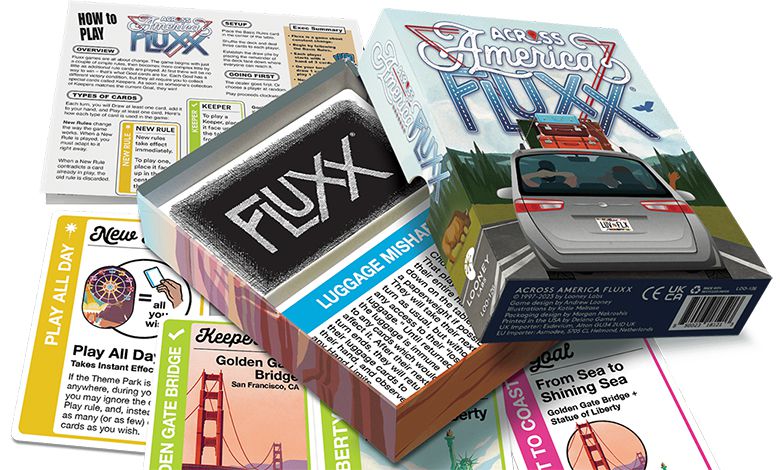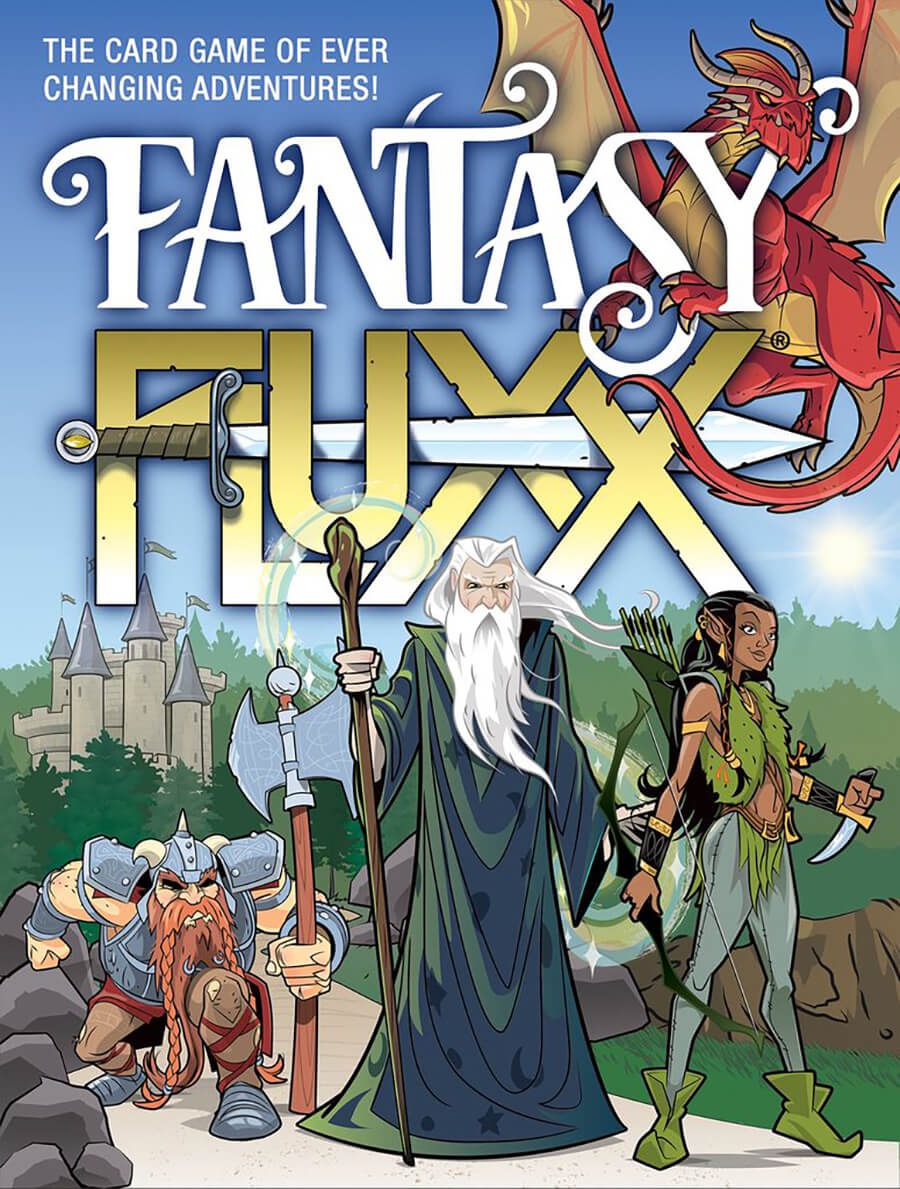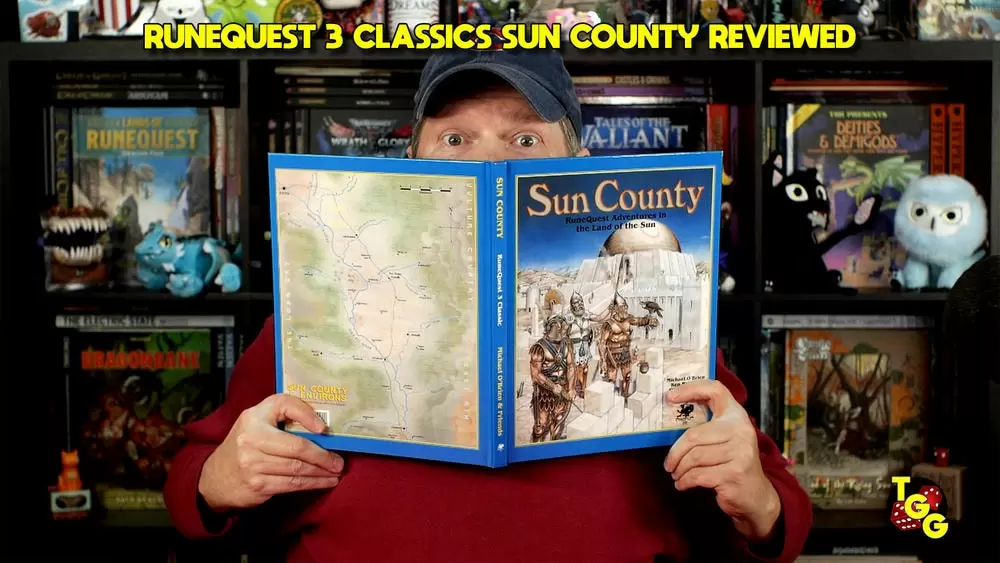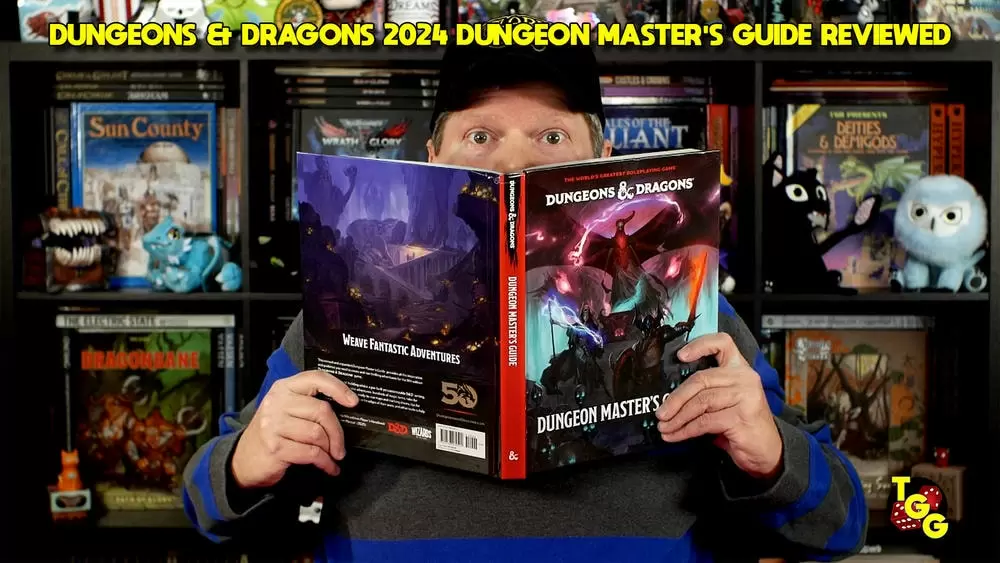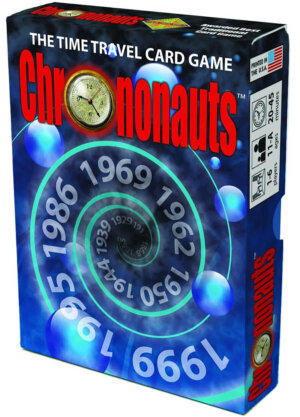
Publisher: Looney Labs
Designer: Andy Looney
Artists: Alison Frane and Derek Ring
Genre: Time tripping push your luck card game
Year: 2000
Players: One to six players
Ages: 11+
Playing time: 20 to 45 minutes
MSRP: $20.00
Looney Labs rises like a kind of continental divide in hobby gaming. Gamers split pretty clearly over a game like Fluxx, and the split over that game is almost as deep as the divide about Munchkin. I’m of the opinion that you take the game on its own terms. Fluxx is chaos in a box, and sometimes I’m ok with that. But I never think that I’ll find the optimal strategy—and, further, I don’t think that if the game lacks an optimal strategy then it must be broken. Other people don’t like madness, but they’re drawn to the humor in the basic Fluxx game and its many expansions. What to do?
Luckily, there’s an answer: Chrononauts.
As I go through this review, please keep in mind that this is still a Looney Labs game. There’s a lot of chaos, but you have the chance to control the chaos a lot more than you ever could in Fluxx.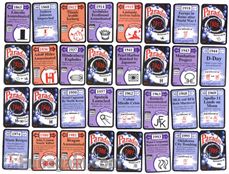
The idea in Chrononauts is that each player plays a, um, chrononaut—a time traveler. The trick here is that each player comes from a timeline which is close, but not identical to, the history we know and get tested on from third through twelfth grade. So you, the chrononaut, must travel through time and change events until you recognize the history in which you grew up. Alternately, you can collect a bunch of cool stuff and just settle down whenever.
As the contents section above suggests, this is a card game. The TimeLine cards are laid out in four rows. The top row is the oldest time period, starting in the mid-nineteenth century, and the bottom row is from fairly recent history. Two kinds of cards inhabit these rows: Linchpins and Ripplepoints. As Linchpins are flipped (a new history is revealed), the changes effect Ripplepoints (which become Paradoxes). Players manipulate the Linchpins and Ripplepoints through the play of their Chrononaut cards.
The Chrononauts deck comprises six kinds of cards: Inverter (flips Linchpins), Patch (fixes Paradoxes, are key to winning the game, and, oh yes, they’re hilarious), Artifact (stuff, also hilarious, and another way to win the game), Action (rule-breaking cards that owe a lot to Fluxx), Gadget (more rule manipulation), and Timewarp (yet another kind of action).
Play is simple and will be immediately familiar to Fluxx players: draw a card, play a card.
But what to play? There are two other decks in the game, the ID and Mission cards. The ID cards tell you how the timeline should look for you to win. For each ID card—one is handed out face-down to each player at the beginning—a player will need an event to remain in our familiar history, create two Paradoxes and then Patch them. Mission cards compel you to collect three Artifacts. If you can match the revised timeline, or if you have the Artifacts—either situation must be true at the end of your turn—you win the game! (You can also win by collecting 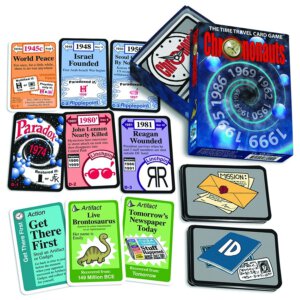
Chrononauts is a light, quick card game. The TimeLine will change a lot during play, and there are Ripplepoints that only flip—or flip back—if certain combinations are showing elsewhere, so you have to pay a lot of attention to what’s going on. The Chrononaut cards let you steal from others, go back through the deck, force players to draw new IDs or Mission cards, and other manipulations of the people sitting at the table. Strategy is not a focus, but if you like rapidly changing tactical games, Chrononauts is a good one. While you still feel the chaos of Fluxx lurking below the surface, the play is much more satisfying–and it moves toward a (mostly) predictable end. The TimeLine rows take up a bit of space on a table, but the box is small and can easily be dropped into a backpack or game bag so you can deal the game out for late arrivals for game day or between heavier games. The game has been through multiple printings in ten years, a great track record in an industry when a game can simply disappear from view in a year.
I want to end this review by pointing out that a new printing of Chrononauts has just hit stores, as has a new implementation of the game as a Back to the Future tie-in. It looks like the new cards for both versions are more sturdy, the game boxes more friendly for getting cards in and out, and the rules have been re-designed for the page. I have the third printing of the game, so I can’t speak to the new versions, but it looks like Looney Labs has done a nice job extending the life of this fun game.
- Titan Comics for February 21st, 2018 - Feb 17, 2018
- The Gardeners and the Panda?: A Review of Takenoko - Jan 25, 2012
- You Made a Time Machine Out of a DeLorean? Back to the Future – The Card Game Reviewed - Jan 8, 2012


